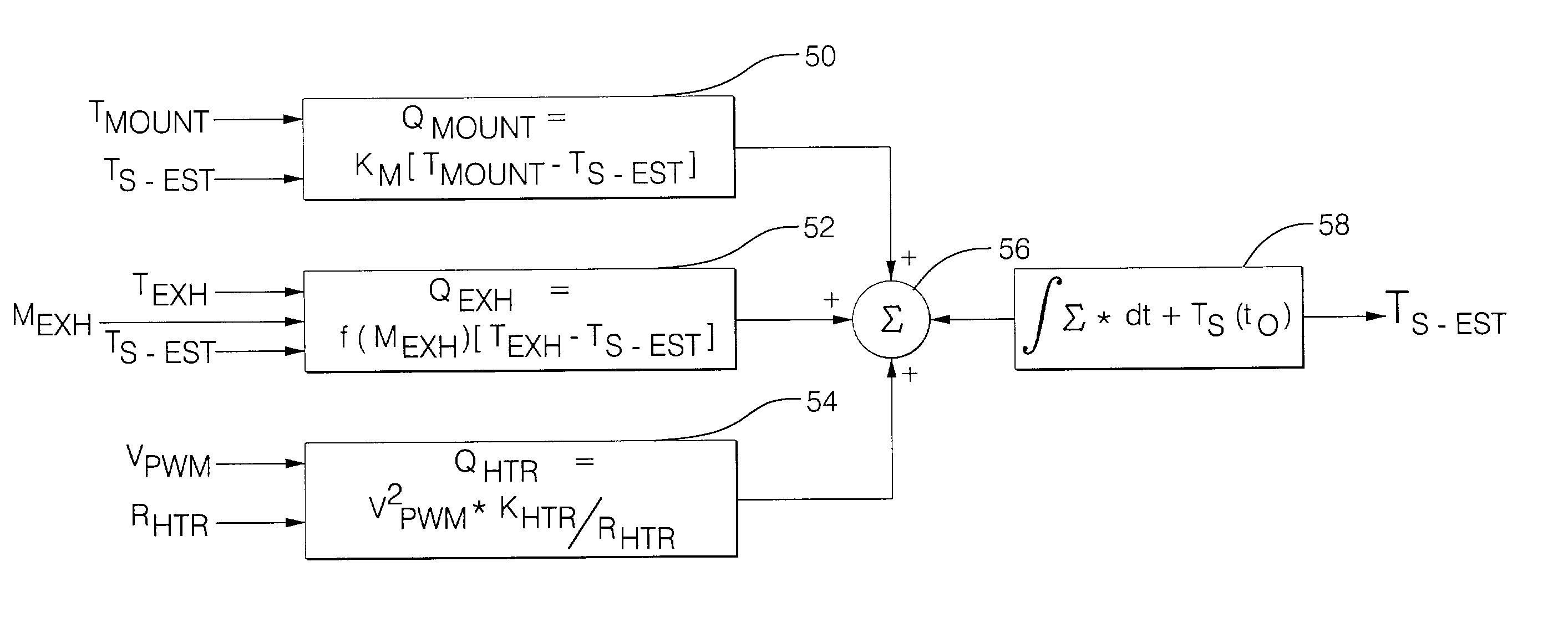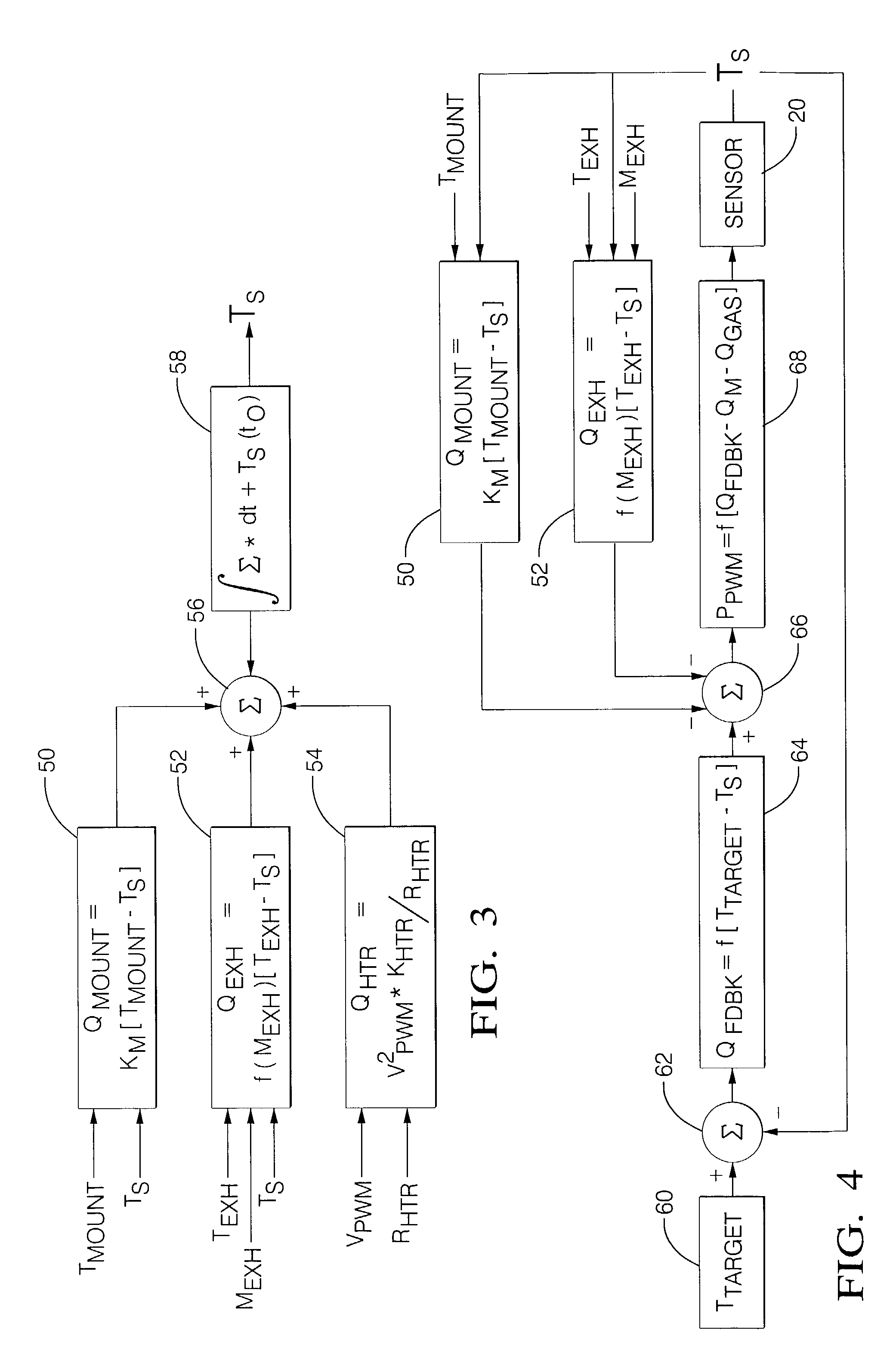Method and apparatus to control an exhaust gas sensor to a predetermined termperature
- Summary
- Abstract
- Description
- Claims
- Application Information
AI Technical Summary
Benefits of technology
Problems solved by technology
Method used
Image
Examples
Embodiment Construction
[0030]Referring now to the drawings, wherein the showings are for the purpose of illustrating an embodiment of the invention only and not for the purpose of limiting the same, FIG. 1 shows an exhaust gas sensing system controllable to a predetermined temperature which has been constructed in accordance with an embodiment of the present invention. The system includes an exhaust gas sensor 20 comprising a sensing element 22 and a controllable heating element 24 that is operably attached to a controller 10. The controller 10 has an output device 12 that is operably attached to the controllable heating element 24. There is a signal, VSEN, that is the output of the sensing element 22 and is input to the controller 10 over signal line 13. In this embodiment, the exhaust gas sensor 20 is mounted in an exhaust feedstream 26 of an internal combustion engine (not shown) that is controlled by the controller 10. The sensor is mounted in an exhaust pipe on a mounting structure 28 that can compri...
PUM
 Login to View More
Login to View More Abstract
Description
Claims
Application Information
 Login to View More
Login to View More - R&D
- Intellectual Property
- Life Sciences
- Materials
- Tech Scout
- Unparalleled Data Quality
- Higher Quality Content
- 60% Fewer Hallucinations
Browse by: Latest US Patents, China's latest patents, Technical Efficacy Thesaurus, Application Domain, Technology Topic, Popular Technical Reports.
© 2025 PatSnap. All rights reserved.Legal|Privacy policy|Modern Slavery Act Transparency Statement|Sitemap|About US| Contact US: help@patsnap.com



